The Camino del Norte is an adventure of a lifetime. Otherwise known as the Northern Way, this long-distance pilgrimage wanders along the Cantabrian coastline before heading inland to the enchanting city of Santiago de Compostela. The second-longest Jacobean Route, the Northern Way, is unparalleled in its beauty. Tracing the dramatic coastline of the Atlantic Ocean, this passageway travels through ever-changing landscapes—from bustling beach towns, medieval hamlets, lush forestlands, vineyards, and mountainous regions. Northern Spain’s topographic diversity is explicit along the Northern Way, boasting a stimulating walk to the holy city.
Stretching over 497.1mi from Irún to Santiago de Compostela, the Camino del Norte is reserved for intrepid spirits, demanding stamina and a month-long commitment. Travelling along serene coastline trails and technical mountain ascents, this trek challenges both the body and the mind. With ample time to reflect and reconnect, this pilgrimage is ideal for those seeking a more tranquil and spiritual journey. No matter your motivation or incentive for tackling this taxing trek, planning your pilgrimage may just be the most daunting task, so let us help!
Camino del Norte Itinerary
The Camino del Norte stretches across four regions in northern Spain: Basque Country, Cantabria, Asturias, and Galicia. Departing from Irún, a small town on the border between Spain and France, the Camino de Santiago pilgrimage yields countless natural and cultural experiences along the way. Visit the historic cities of San Sebastián, Bilbao, Santander and Gijón all before diverting inland to the mystic city of Santiago de Compostela.
Travelling over 506.4mi through diverse topographies is no easy feat. The Camino del Norte is considered one of the hardest pilgrimage routes, but we think it is also one of the most rewarding. The breathtaking scenery is sure to motivate even the most discouraged hikers, and when you finally arrive at the cathedral, a wave of personal achievement will rush over you. That being said, it is incredibly important that you are properly prepared for this expedition, refer to our ultimate packing list for the Camino de Santiago for what necessities to bring along. For training tips and tricks, check out our guide on how to prepare for the Camino de Santiago.
Though independently organizing a pilgrimage is doable, especially with the right itinerary and packing lists, we find it to be a bit of a headache-inducing task. If you find yourself stressing about which route to take and the basic costs and demands of the Camino, then you may find the extensive guide to the Camino de Santiago useful. Still feeling overwhelmed? Why not book a Northern Way tour, and let us take the weight off your shoulders.
Stage 1: Irún to Markina
Ready for your life-changing pilgrimage along the Camino del Norte? Begin Stage 1 by flying into Biarritz then taking a train down to Irún. Wander along the coast through the bustling beach town of San Sebastián bounded by sandy beaches and blue-hued waters decorated with tourists. Hike over rolling hills to Zarautz and inland past beautiful ancient churches to Markina.
- Irún: Albergue de Peregrinos Jakobi
- San Sebastián: Albergue Juvenil Ondarreta – La Sirena
- Zarautz: Zarautz Hostel
- Deba: Albergue de Peregrinos Geltoki
- Markina: Albergue de Peregrinos Convento del Carmen
Distance: 57.8mi
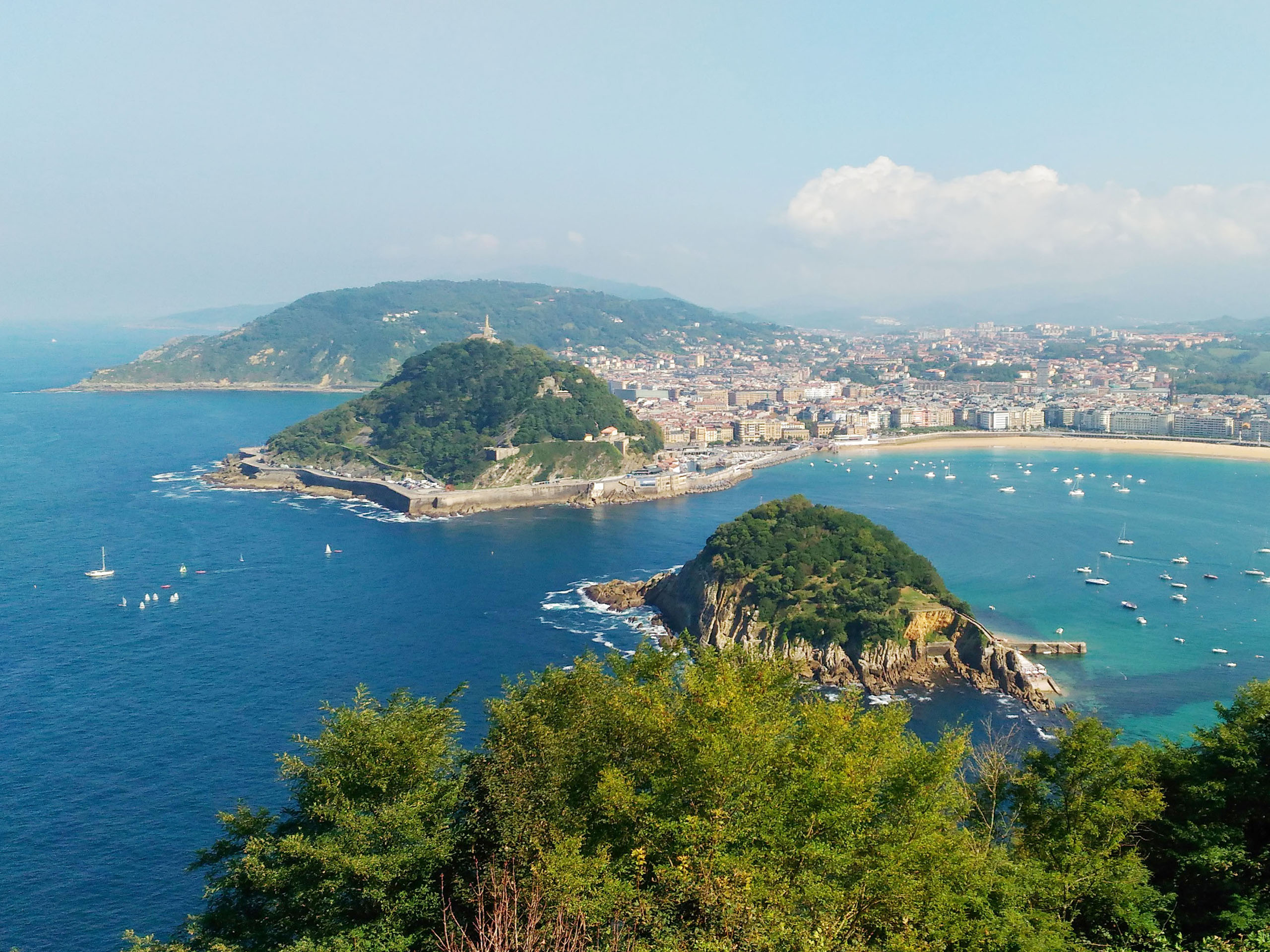
Stage 2: Markina to Castro Urdiales
The beginning of Stage 2 continues inland, passing the Zenarruza Monastery—a national monument in the Basque Country. Pilgrims will have to navigate the undulating terrain up and over mountains which exhibit breathtaking vistas of the cities below. Be sure to take the time and explore Bilbao, a densely populated historic city. This stage warrants the most urban settings along the Camino del Norte. On your final day of walking to Castro Urdiales, pilgrims will leave the Basque Country in the rear-view mirror and enter Cantabria, reconnecting with the coastline.
- Gernika: Albergue Juvenil de Gernika
- Lezama: Albergue de Peregrinos de Lezama
- Bilbao: Albergue de Peregrinos de Bilbao
- Portugalete: Albergue de Peregrinos de Portugalete
- Castro Urdiales: Albergue de Peregrinos de Castro Urdiales
Distance: 64.0mi
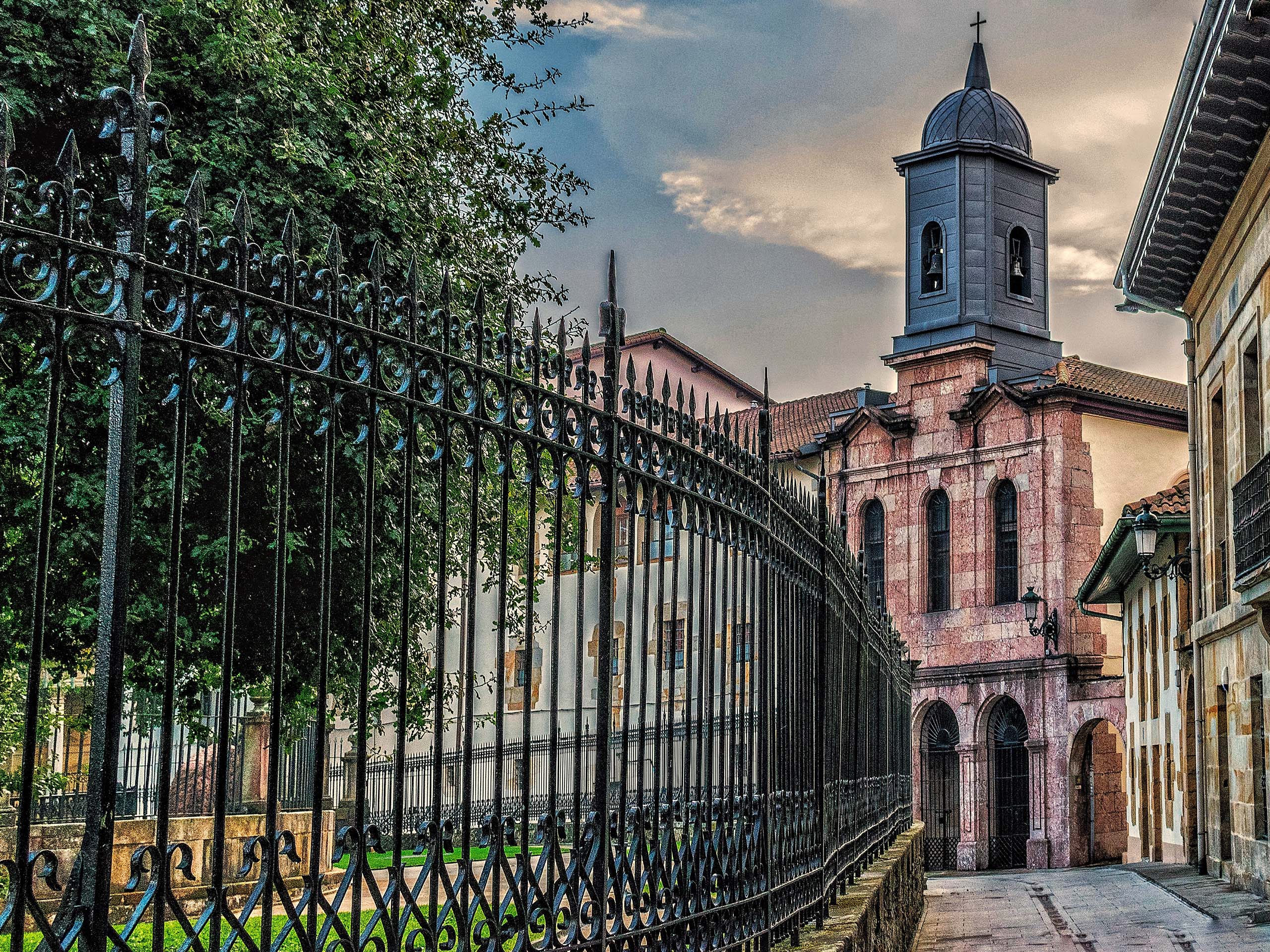
Stage 3: Castro Urdiales to Comillas
Setting out from Castro Urdiales, pilgrims will venture through stretches of trail overlooking the glittering sea and verdant valleys. Stage 3 is one of the most scenic phases, guiding adventures through resort towns, along sandy beaches of the Cantabrian coast, and to the historic city of Santander. Be sure to explore the vibrant town of Santillana del Mar adorned with Romanesque churches and indulge in local gastronomy and tasty vino. End this stage in Comillas.
- Laredo: Albergue-Residencia Casa de la Trinidad
- Güemes: Albergue La Cabaña del Abuelo Peuto
- Santander: Albergue de Peregrinos Santos Mártires
- Santillana del Mar: Albergue de peregrinos Jesús Otero
- Comillas: Hostal La Huella del Camino
Distance: 77.7mi
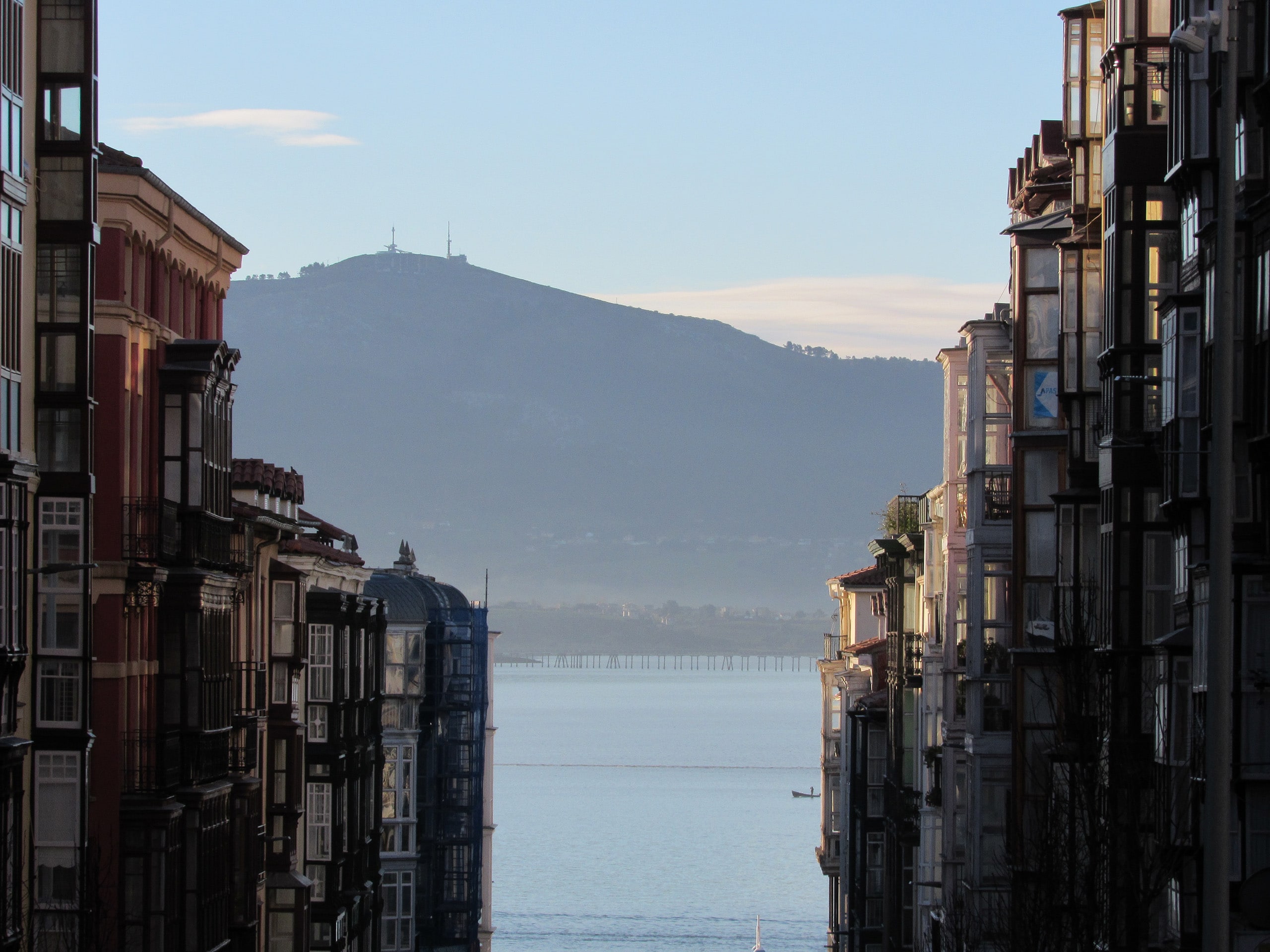
Stage 4: Comillas to Gijón
Stage 4 begins by meandering through the fishing village of San Vicente de la Barquera and into the region of Asturias. A combination of coastal and inland paths, take the time to explore Ribadesella’s prehistoric caves if the time permits. Crossing the Libardón River, some pilgrims choose to veer south to Oviedo and venture the Camino Primitivo to Santiago de Compostela, but this itinerary continues along the Northern Way.
- Colombres: Albergue El Cantu
- Llanes: Albergue La Casona del Peregrino
- Ribadesella: Albergue Juvenil Roberto Frassinelli
- Sebrayo: Hostal El Mesón
- Gijón: Boogalow Hostel
Distance: 93.8mi

Stage 5: Gijón to Luarca
Setting out from Gijón you will begin this stage by ascending Monte Areo which exposes panoramic vistas of the glittering ocean and bustling cities below. Wander inland through the charming hamlets and over medieval bridges. Enjoy the change of scenery, immersing yourself in the lush countryside and historically rich towns before reconnecting with the coastline after Soto de Luiña. Revel in the views of the blue-colored water and head down to the beautiful harbor in Luarca.
- Avilés: Albergue de Peregrinos Pedro Solís
- Muros de Nalón: Casa Carmina Hostel
- Soto de Luiña: Albergue de Peregrinos de Soto de Luiña
- Cadavedo: Albergue de Peregrinos de Cadavedo
- Luarca: Albergue Villa de Luarca
Distance: 60.9mi
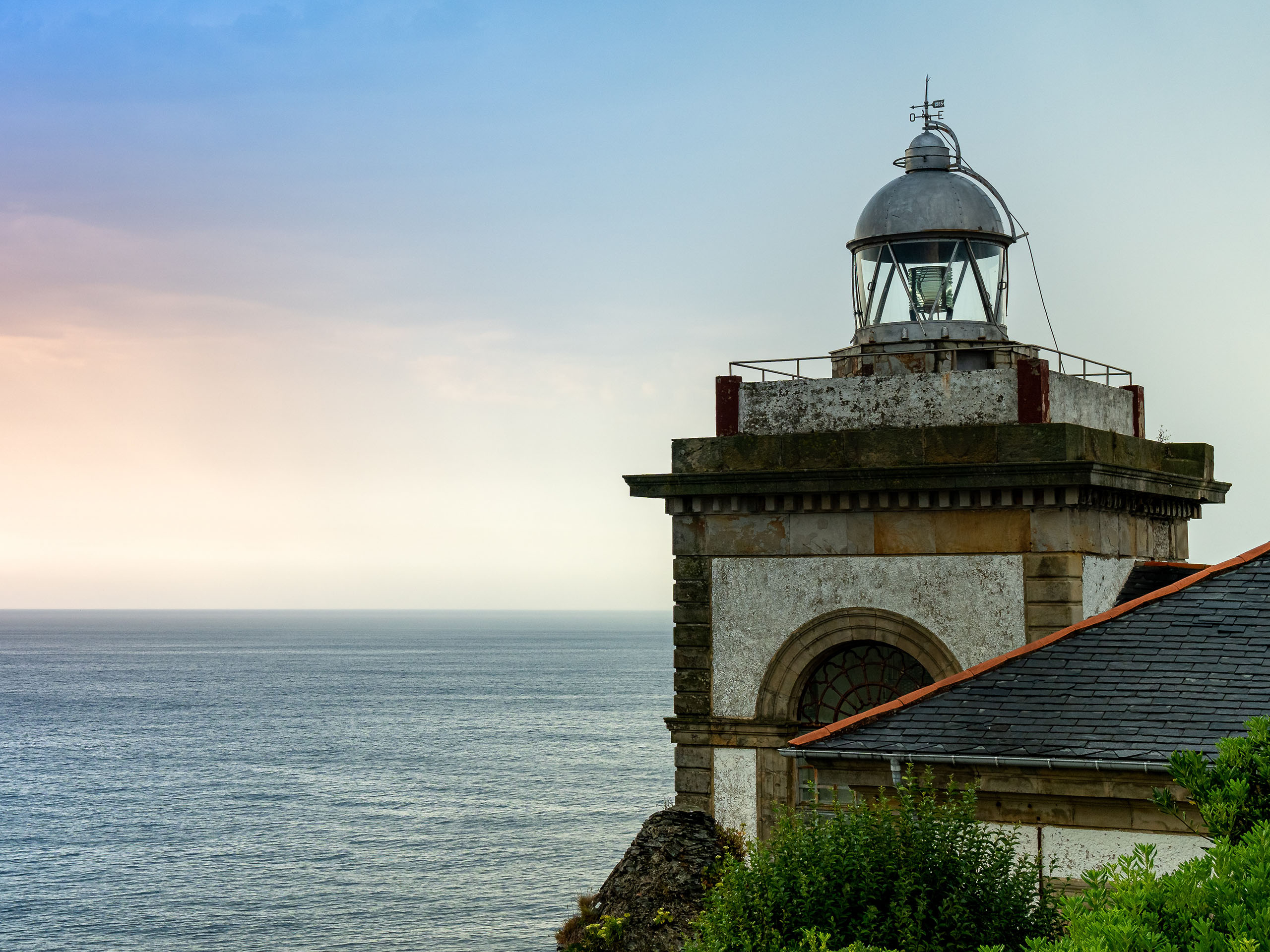
Stage 6: Luarca to Vilalba
Today you will begin stage 6, setting out from Luarca and meandering along the coast and countryside through several towns, including Navia. Indulge in the ocean views, salty air, and cool breeze because you will soon be diverted inland. Cross over Ría del Eo into Galicia. Explore the Pazo de Tovar Castle in Lourenzà and the city of Mondoñedo. Now venturing through Galicia’s idyllic countryside, you will be immersed in the rolling mountains, farmlands, vineyards, and enchanting forestlands.
- La Caridad: Albergue de Peregrinos de La Caridad
- Ribadeo: Albergue de Peregrinos de Ribadeo
- Lourenzá: Albergue de Peregrinos de Lourenzá
- Abadín: Albergue Xabarín
- Vilalba: Albergue de Peregrinos de Vilalba
Distance: 78.3mi
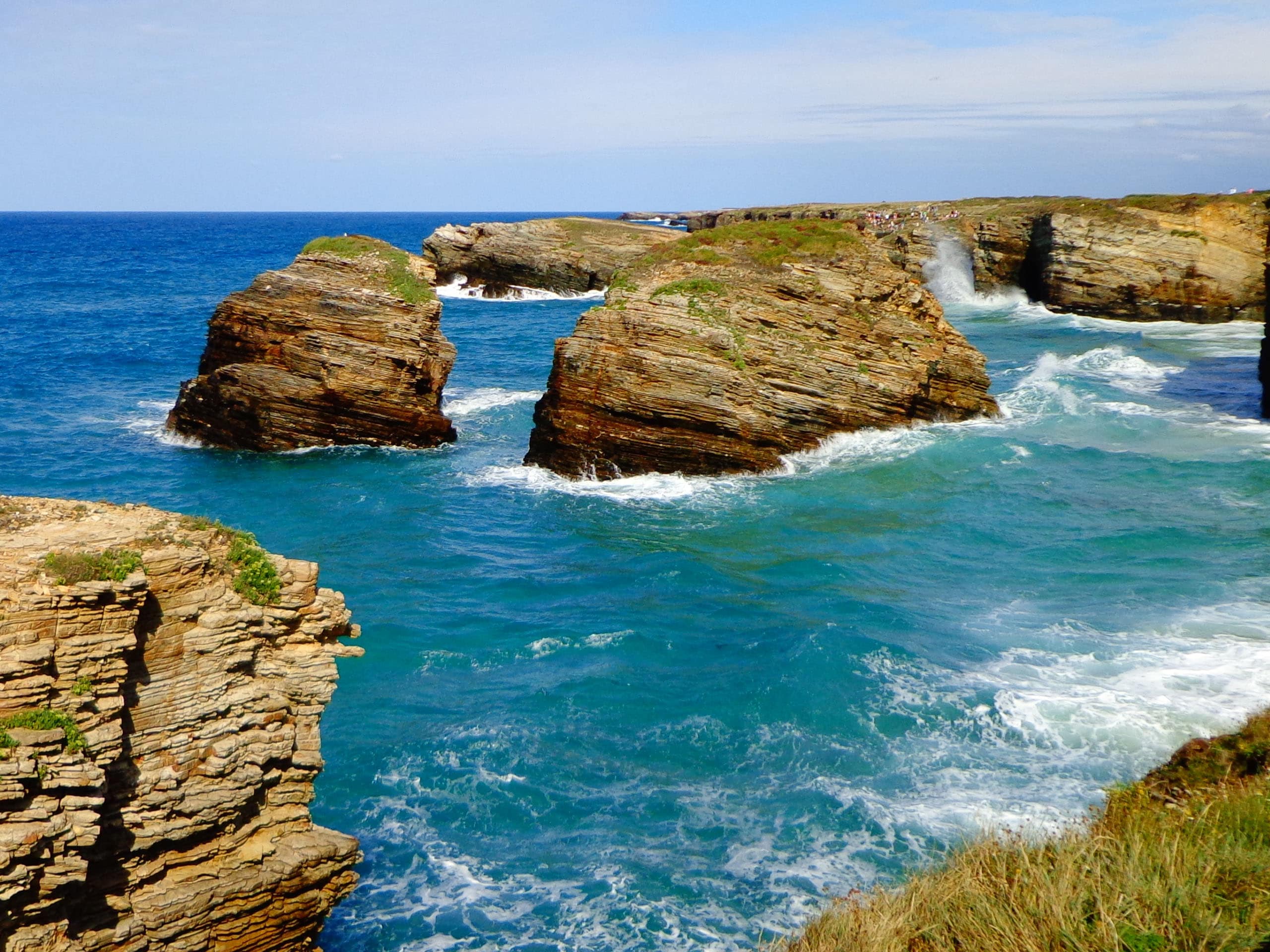
Stage 7: Vilalba to Santiago de Compostela
Stage 7 is the final step on your month-long journey to Santiago de Compostela. This section of the pilgrimage is more rural, isolated, and primitive. Enjoy the tranquility and take the time to reflect as you meander through luxuriant meadowlands, cattle farms, and charming hamlets. In Sobrado be sure to check out the Sobrado dos Monxes Monastery if time permits. In Arzúa you will be joined by those who ventured the Camino Francés. Enjoy the company as you make your way to Santiago de Compostela. Wander around the city’s UNESCO-listed Old Town and bring your passport into the Pilgrims Office to get your official Compostela!
- Baamonde: Albergue de Peregrinos de Baamonde
- Sobrado: Albergue de Peregrinos del Monasterio de Sobrado dos Monxes
- Arzúa: Albergue de Peregrinos de Arzúa
- Pedrouzo: Albergue de Peregrinos de Arca – O Pino
- Santiago de Compostela: Albergue Parroquial Fin del Camino
Distance: 74.6mi
Camino del Norte Map
Check out the coastal route that travels 509.5mi to Santiago de Compostela.
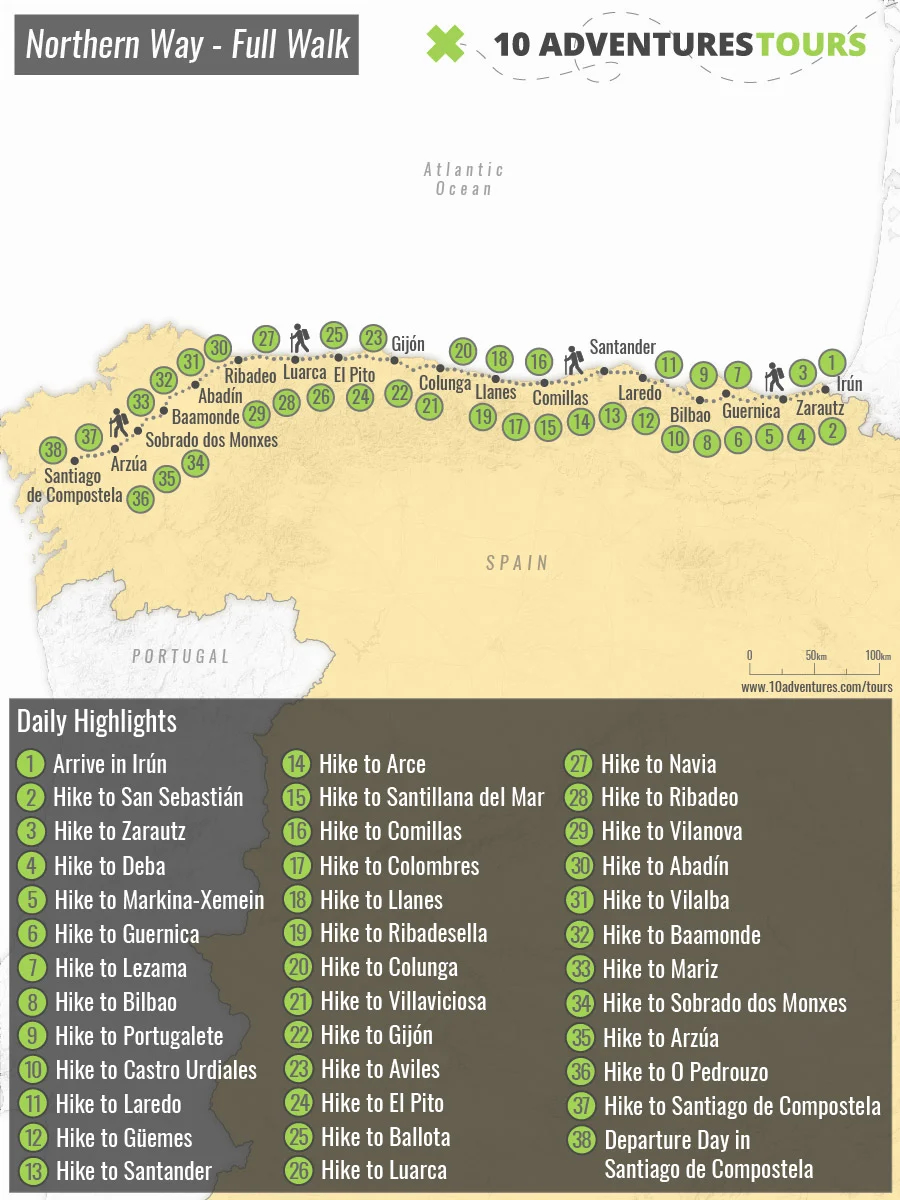
About the Camino del Norte
The Northern Way, like the Camino Francés and Camino Primitivo, was one of the first pilgrimage routes to Santiago de Compostela. Kings, crusaders, and worshippers would travel by land to Northern Spain or arrive by boat in Basque Country or Cantabria. From here, pilgrims would wander along the Cantabrian coast before travelling inland to Santiago de Compostela. Want to learn more about the pilgrimage’s history? Check out 15 interesting facts you may not know about the Camino de Santiago for some cool facts.
Though one of the first paths to the religious relic, the Camino del Norte dropped in rankings, earning the third most popular route to the French Way and Portuguese Way. Due to its muted popularity, there are fewer pilgrim albergues and infrastructure along the way, notably in stage one. If you are worried about accommodations, or rather don’t want to worry about them, then why not book a Camino de Santiago tour in luxury, and treat yourself to a decadent experience.
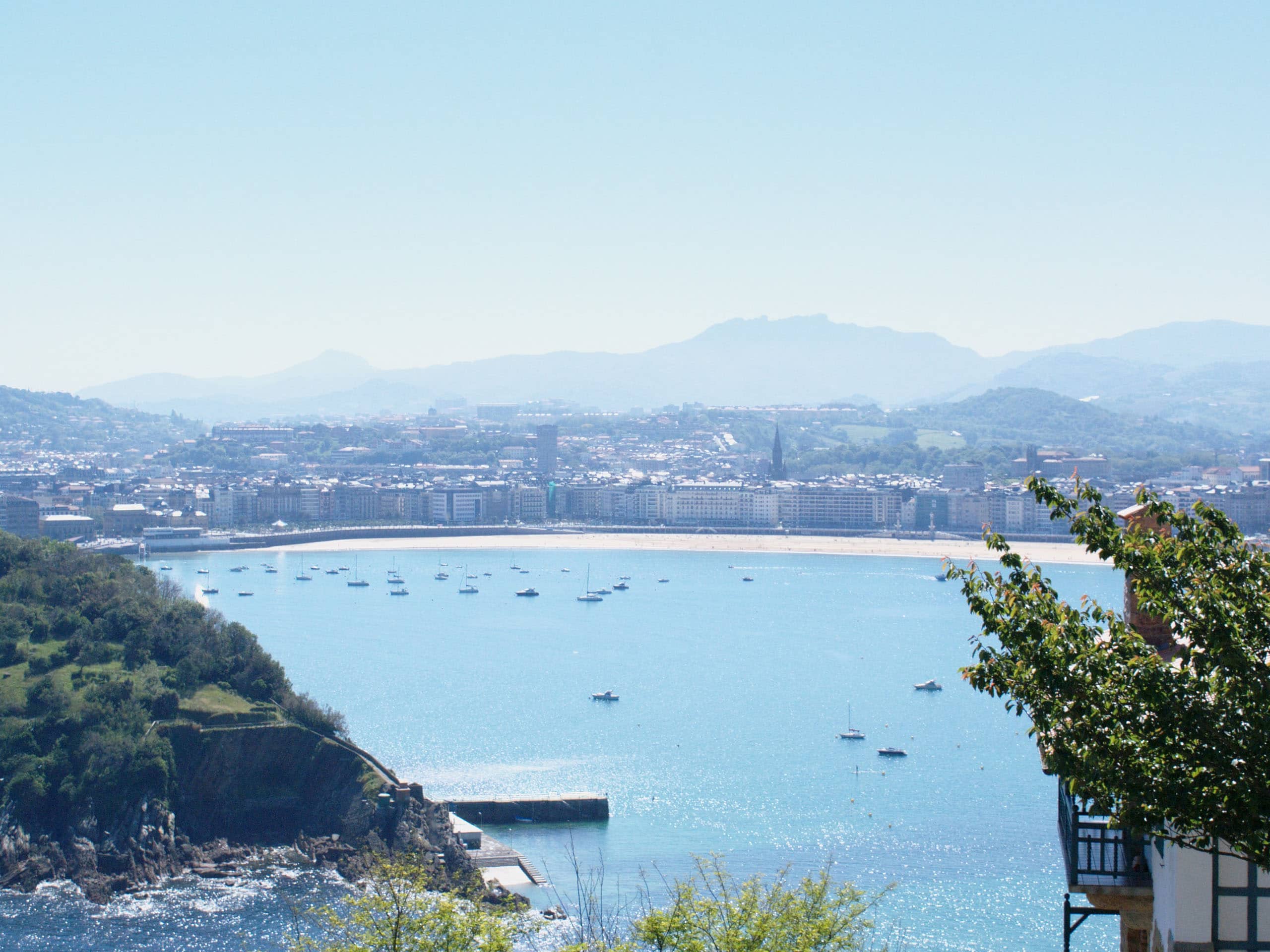
The Best Time to Walk the Camino del Norte
This coastal trek’s beauty exceeds just that of the awe-inspiring vistas but includes the weather too. Enjoy the maritime conditions which warrant rainy, mild winter months and cooler summer days. Like other coastal routes to Santiago de Compostela, the Northern Way is best enjoyed in June, July, August, and September when the conditions are less rainy and warm. Travelling along the Cantabrian coastline through popular tourist beach towns, expect to see crowds in the summer months! If you are seeking more information regarding the pilgrimage routes’ seasonality, then check out our guide on when to walk the Camino de Santiago.
Camino de Santiago Trip Planning Articles
- Discover the Camino de Santiago
- Camino Planning: Best time to Walk the Camino
- Camino Planning: How to prepare to Walk the Camino
- Camino Planning: What to pack for your Camino
- Route Guide for the Camino Frances
- Route Guide for the Camino Finisterre
- Route Guide for the Camino Portugues
- Route Guide for the Camino Primitivo
- Route Guide for the Camino Ingles
- Route Guide for the Camino Via de la Plata
- Route Guide for the Camino Invierno
- Interesting Camino de Santiago Facts

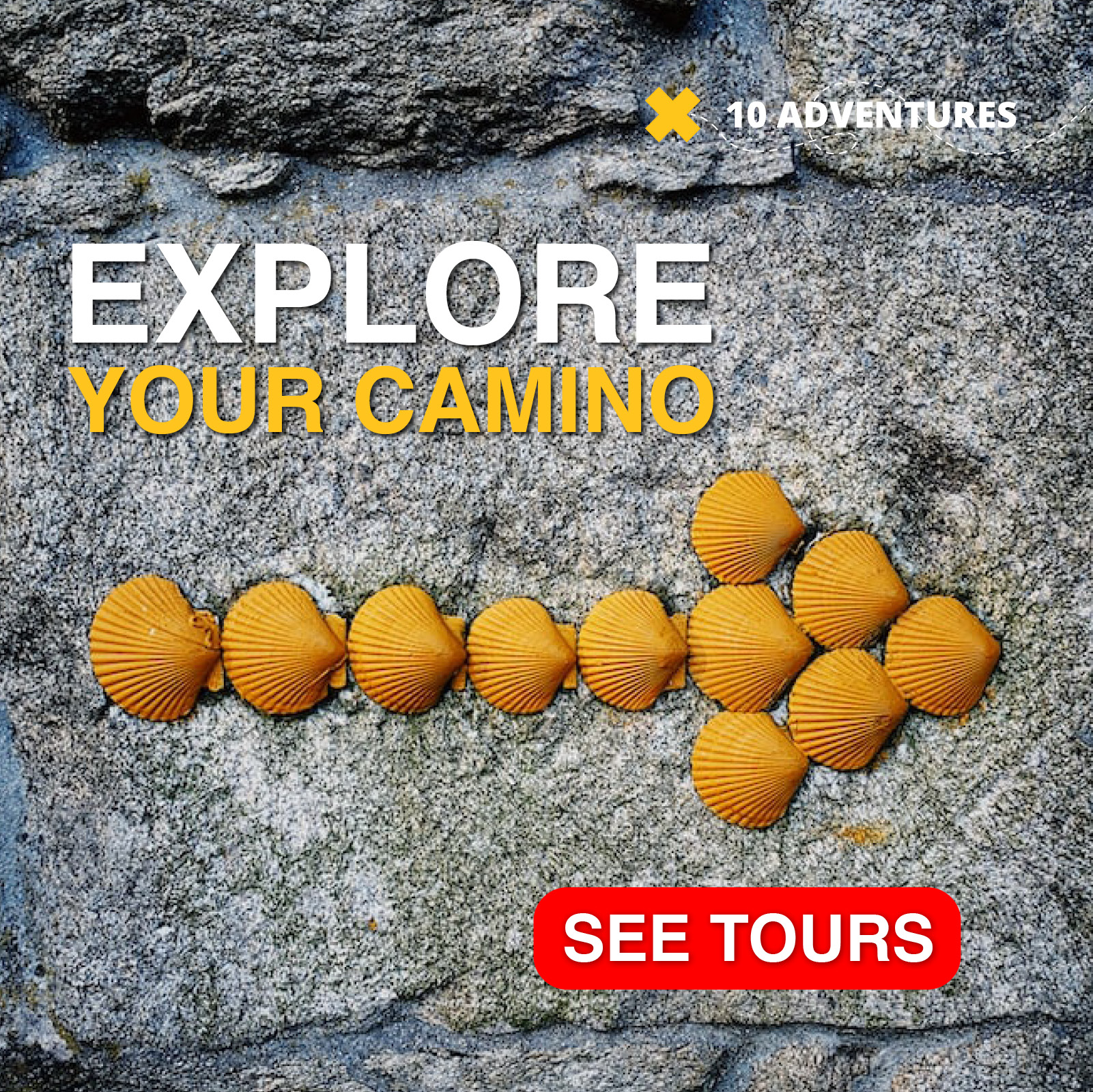
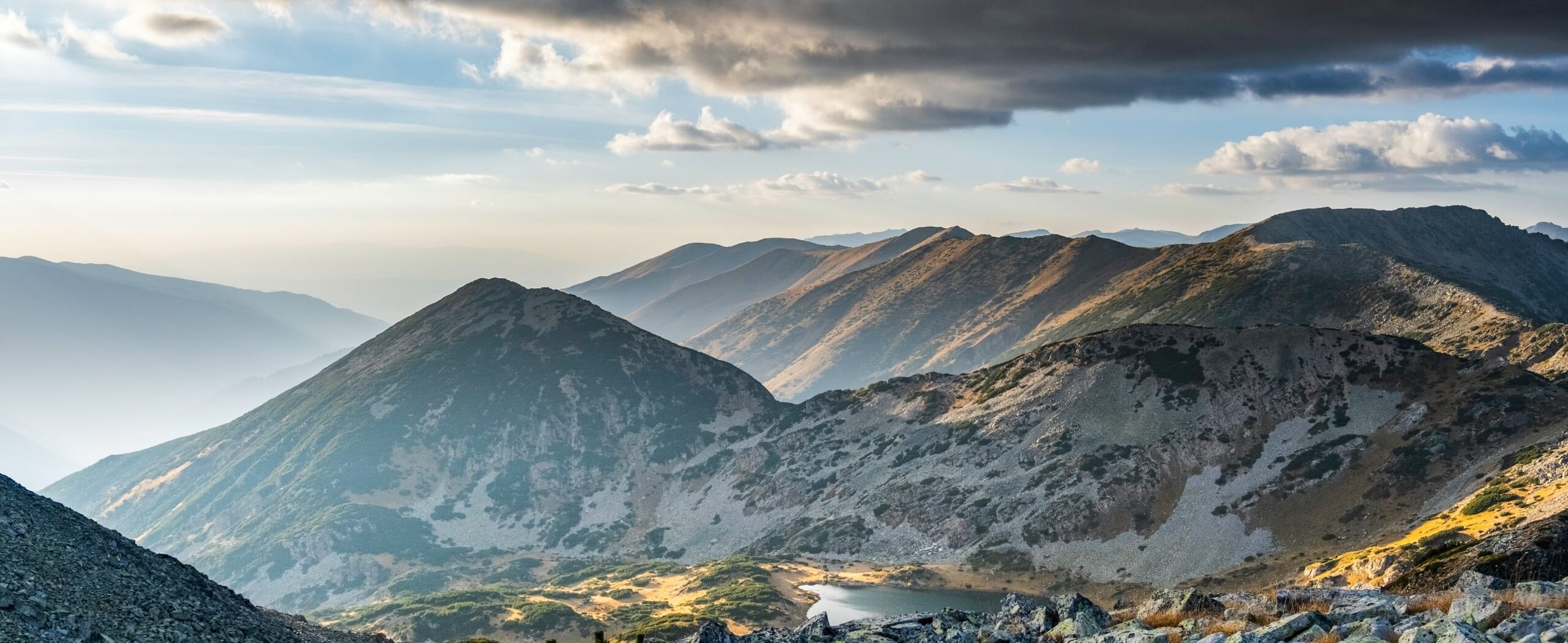
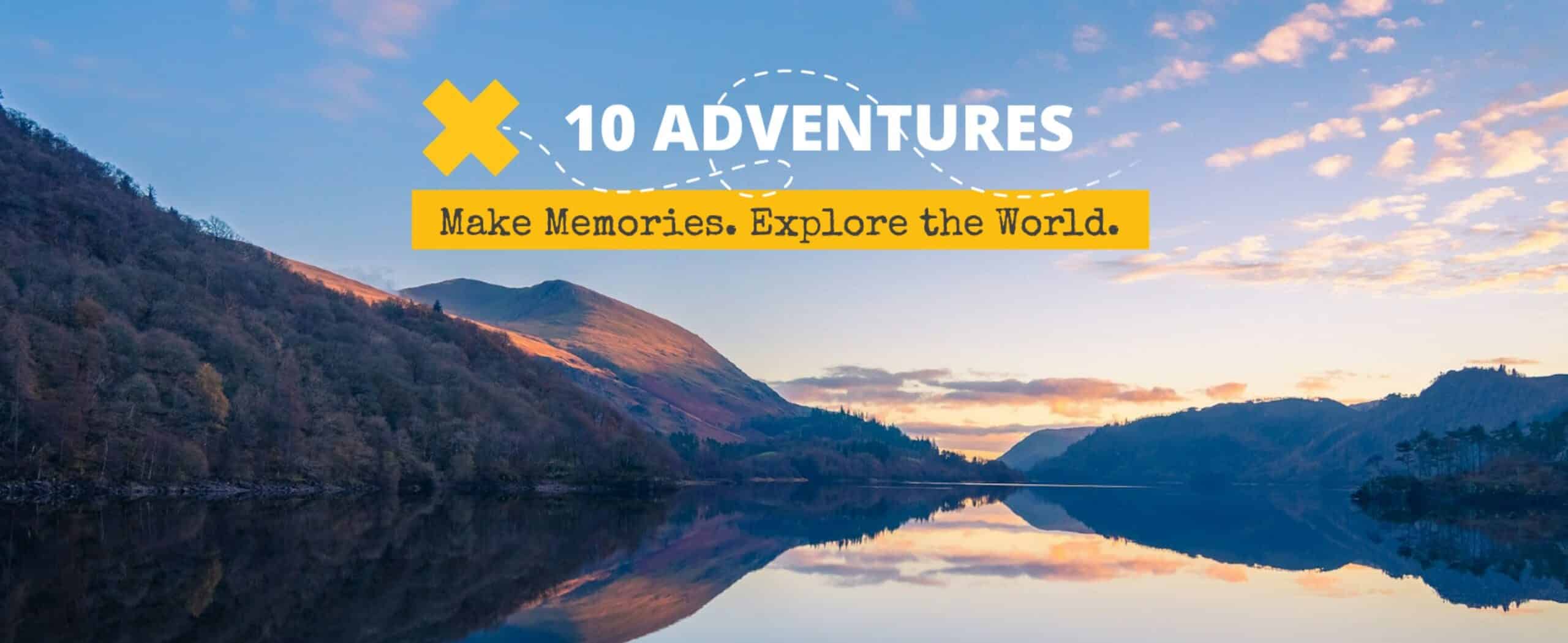

Comments